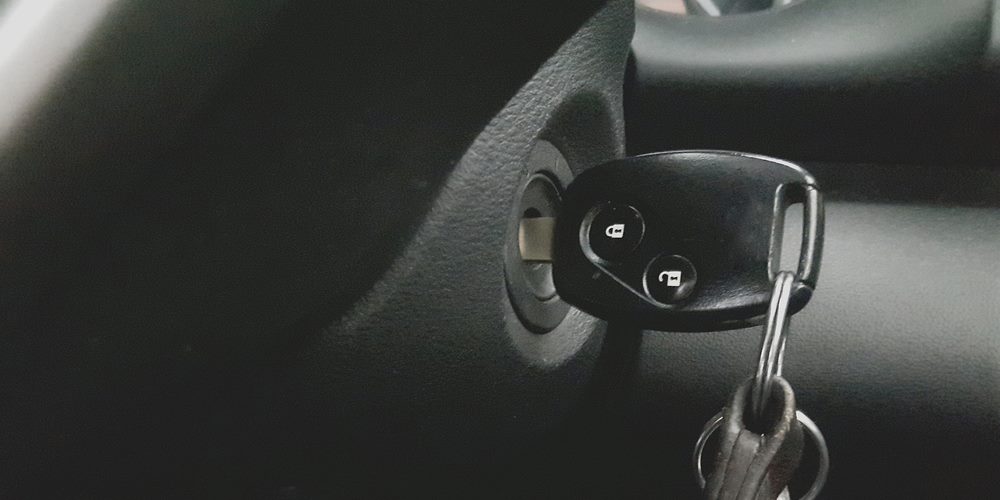What does the car ignition actually do?

Alright, let’s talk ignition systems. Basically, when you hop in your Mazda Demio or Honda CR-V and turn the key (or push the button in some of those flash Euro models like a Citroen C3), the ignition’s job is to fire up the engine. It takes power from your battery and sends it down the line so your spark plugs can do their thing – which is ignite the fuel/air mix in the engine. Without that little chain reaction, you wouldn’t get far down Kahikatea Drive or Gordonton Road.
There’s a handful of bits in your ignition system, and if any of them go out for a lunch break, you’ll know it pretty quick – especially if you need to get the kids across town to Cambridge in the morning or do the run out to Te Kowhai.
- Battery: This is your main power source when the car’s parked up outside Pak’nSave or backing out of a driveway in Rototuna. When you turn the key, the battery kicks things off. The alternator keeps it topped up once the car’s running.
- Ignition switch: It’s that bit your key goes into, controlling power to the rest of the system. Dash lights come on, then the engine fires up.
- Ignition coil: This bit turns your 12 volts of battery power into way more (think thousands of volts) so the spark plugs can actually spark. No coil, no spark. Simple as.
- Spark plugs: These are at the business end – they create the spark that ignites your petrol every time a piston’s ready. If they’re worn, old, or covered in gunk, the car won’t start or runs rough as guts.
If any part cops a hiding from Hamilton’s potholes, or just wears out from all those stop-start trips on Victoria Street, you’re likely to run into problems. The trick is figuring out which bit’s the culprit. You can read more about ignition systems here if you want the nitty gritty.
How do you spot a crook battery?
- Slow to turn over: You turn the key and it cranks, slow as, especially on a cold, foggy winter morning in Dinsdale. Real struggle to start.
- Swollen battery: If your battery starts looking like it’s had too many pies, it’s probably on its way out.
- Battery indicator shows red: Some batteries have that wee glass window on top – if it’s red, your battery’s flat or stuffed. Green usually means you’re all good.
- Keeps going flat: Jump-starting all the time? Could be your battery, but sometimes it’s your alternator playing up. Pretty common in older Subaru Foresters and the odd Nissan Leaf with a tired 12v.
Need a new battery? We’ve got car battery replacement service in Hamilton sorted for you.
Ignition switch issues – they’re a pain
- Stalls for no reason: If your Toyota Yaris or Suzuki Swift cuts out while driving down Hukanui Road or stalls at the lights, sometimes it’s the ignition switch giving out.
- Only fires up for a second: It’ll start, then stall as soon as you let go of the key. Often the switch connection’s dodgy.
- No power to electrics: Radio, lights, or windows just dead? Switch could be the reason. Seen it happen on older BMW 3 Series and even a few Asian vans.
Iffy ignition coil symptoms
- No start: Coil can’t give a big enough zap to spark plugs? You won’t get your Corolla or Peugeot Partner van started, especially after a night parked outside the Chartwell tavern in winter.
- Misfiring, rough idle, stalling: Feels like kangaroo juice under the accelerator, shakes when idling, sometimes cuts out. Faulty coil’s a usual suspect.
- Check Engine light is on: A dud coil will often trigger the engine light. Bit annoying when you’re due for a WOF Hamilton the next week.
We handle ignition coil replacement in Hamilton all the time.
Dodgy spark plugs – little things, big headaches
- Loss of power, rough running: Feels sluggish up the Dinsdale hills or down River Road. Could be worn or dirty spark plugs causing poor running and rubbish fuel economy.
- Won’t start at all: If the spark plugs are completely poked – worn down, dirty, or gapped wrong – your car’s not going anywhere. Don’t leave them too long, or you’ll smash your ignition coil as well, which is a way pricier fix. Especially important in European cars like an Opel Astra or older Renaults we see in from Tamahere.
Changing plugs is pretty quick. Check out our spark plug service in Hamilton.
Need car ignition repairs in Hamilton?
If your ignition’s playing silly buggers, just pop by. Our crew’s seen it all, from stalling Nissans in Taupiri to temperamental Isuzus from Horotiu. We sort out ignition problems fast, so you won’t be left stranded at The Base or waiting for a tow on State Highway 1. Give us a buzz or roll in – we’re here to help with all your car service Hamilton jobs, big or small.

